Q & A with Amanda Gosman
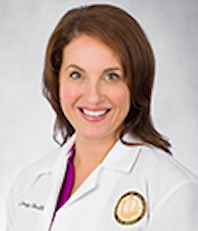 Dr. Amanda Gosman was recently named Chief of the Division of Plastic Surgery at UC San Diego. She also serves as Director of Craniofacial and Pediatric Plastic Surgery; as the Chief of Plastic Surgery at Rady Children's Hospital; and as Director of the Plastic Surgery Residency Program. In this interview she discusses her hopes for the Division of Plastic Surgery in patient care, training and research; and shares the unlikely road that led her to medicine.
Dr. Amanda Gosman was recently named Chief of the Division of Plastic Surgery at UC San Diego. She also serves as Director of Craniofacial and Pediatric Plastic Surgery; as the Chief of Plastic Surgery at Rady Children's Hospital; and as Director of the Plastic Surgery Residency Program. In this interview she discusses her hopes for the Division of Plastic Surgery in patient care, training and research; and shares the unlikely road that led her to medicine.
January 15, 2019 | Interview by Lindsay Morgan
Tell me about who you are.
I grew up in Toledo, Ohio. My father was an orthopedic surgeon, and he was in practice with his father and my uncle. So, a family of orthopedic surgeons. I never had any interest in medicine. I was always very shaped by social issues. I went to Egypt in high school as an exchange student and was really struck by global disparity—I couldn’t understand why some people were progressing and others were so far behind.
That’s when I got the bug of doing global development. I went to Cornell to study architecture and urban planning with the hope of going into international development, but through that process, I saw that a lot of socially oriented projects failed because the people designing them didn’t understand the culture or context.
Eventually I decided I could best help people by going into medicine.
How did you end up in surgery?
I took a year off after my third year of medical school, and worked in Latin America, initially in remote clinics in Guatemala providing primary care to indigenous migrant workers and then working on a mobile surgical unit in the Amazon basin. It was a spectacular experience. It seemed like surgery would be a good fit.
When I came back to the States, I did a plastic surgery rotation and loved it. It was very creative, and involved problem solving and art. It aligned well with who I am, and I thought that, as a specialty, it fit with my desire to work globally.
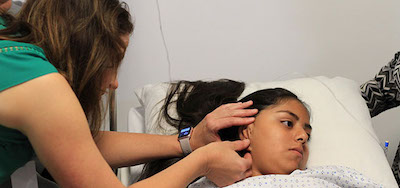 You founded ConnectMed International in 2010, a non-profit organization that provides surgical care to underserved communities, and helps to build health systems through education, partnerships and telemedicine. Why did you decide to focus on education in your international work?
You founded ConnectMed International in 2010, a non-profit organization that provides surgical care to underserved communities, and helps to build health systems through education, partnerships and telemedicine. Why did you decide to focus on education in your international work?
After surgery residency and a craniofacial fellowship, I did an international fellowship with an international organization that, at the time, was called Interplast. As part of that fellowship, I participated in surgical missions in dozens of countries.
From that experience, it was clear to me that there were many problems with the short-term mission trip model and a lot of the traditional ways that plastic surgeons were volunteering internationally. But through Interplast, I also got the opportunity to work with a lot of training programs and I realized that if I was really going to have an impact globally, it had to be through education and harnessing the resources of a university.
You came to UC San Diego in 2006. What brought you here?
One of the things that brought me here was the Fresh Start Surgical Gifts program. I had a really good relationship with the founder of that organization, and we had this shared vision of creating a stand-alone clinic where we could see patients for free right alongside our normal patients, which ultimately came to fruition at Rady Children’s Hospital.
I wanted a job where I could commit to developing service-oriented programs and at the same time have a regular surgical practice. UC San Diego has been a great place for that.
You were recently appointed Chief of the Plastic Surgery Division, which is in its 42nd year and was previously led by Dr. Marek Dobke. Where would you like to move the division clinically over the next 3-5 years?
When you look at San Diego, and I’ve spent a lot of time analyzing the healthcare environment in San Diego County, there’s a lot of talented aesthetic surgery that’s being provided, but the highest level of reconstructive surgery isn’t being offered. Particularly microsurgery. Some microsurgical health services have been offered through other health systems, but it’s usually temporary because those are difficult to maintain without having trainee volume.
With our trainee volume and multidisciplinary teams, we have the potential to serve a wide variety of really complex patients. Our proximity to the border exposes us to a patient population that isn’t present in most parts of the country, even in LA. So, I think there is an incredible opportunity build up a complex reconstructive surgery and microsurgery program.
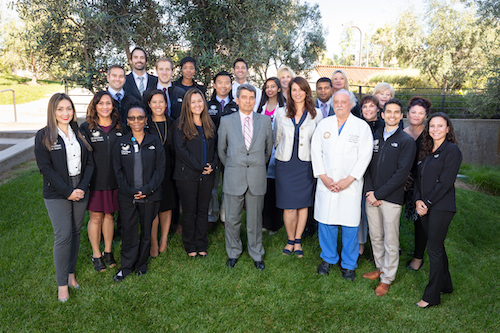 What is your dream for the research space?
What is your dream for the research space?
There’s a lot of interest in our field and among our faculty in stem cell research. For example, Dr. Ahmed Suliman collaborates with UC San Diego’s Division of Endocrinology and ViaCyte, Inc., a biotechnology firm specializing in regenerative medicine, in a study looking at stem cell-derived therapy for patients with Type 1 diabetes.
We are also excited to have recruited Dr. Frederic Kolb, who will join the Division in 2019 from Gustave Roussy Hospital in Paris. He spent two years at UC San Diego doing basic science research in tissue engineering, a body of work he will take forward when he returns. I have also collaborated with the School of Engineering school, and am excited to leverage the incredible talent on the university side to enhance our research.
I’m also personally very interested in quality of life assessment tools. When you think about procedures like breast reconstruction—we’re not reconstructing anything functional. They are psycho-surgeries, intended to improve the patient’s well being, which impacts survival. Now we have better tools to measure that. I’d like to integrate these tools into our clinical practice and leverage our diverse patient population so that we can look at those things over time and better understand what are the best interventions to help patients live fulfilling lives.
Since we started our integrated plastic surgery program in 2016, we have attracted a lot of medical students interested in plastic surgery, which led to the development of the Plastic Surgery Interest Group and the Plastic Surgery Research Group (PSRG). The PSRG meets at least monthly and includes over 40 medical students in addition to residents and faculty. Additionally, this year we have our first research fellow from Balboa, Austin Cooper Morgan, who is a general surgery resident interested in pursuing a career in plastic surgery. Cooper has been a great addition to our research program and recently acquired funding for a study to develop an ERAS protocol for facial trauma patients.
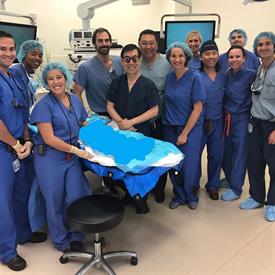 The Division launched an integrated residency program two years ago, and maintains an independent program as well. How do you want to grow these programs?
The Division launched an integrated residency program two years ago, and maintains an independent program as well. How do you want to grow these programs?
One of the issues I’m grappling with, and this is a national issue, is—as we move towards the integrated residency model, how do we ensure residents get the most out of the basic surgical training? That’s one of the challenges and I think we will evolve over time as we learn.
One of the things I’d really love to do would be to incorporate more research and elective time into the residency, and to make some element of it project based. It’s an interesting concept and you see it in training programs in some African countries, where they complete a Masters degree in surgery which requires that they dedicate a significant amount of time toward the design and completion of a research project . I think that’d be really interesting. I would also like to make our training program more international and be able to incorporate some of our international sites in a structured way where those rotations count. Our craniofacial surgeon collaborator in Tijuana is going to be appointed as one of our faculty so that will help to set the stage for that.
You are on the judicial council and previously served as chair of the ethics committee for the American Society of Plastic Surgeons. What are your thoughts on the ethics of social media in plastic surgery?
It’s a humungous issue. The majority of social media postings about plastic surgery are not by board-certified plastic surgeons, and many aren’t even by plastic surgeons. So most of it is individuals who may not be board certified in any specialty or by people who have non-ABMS Boards such as the American Board of Cosmetic Surgery, which is basically just an online application and there are issues of posts lacking professionalism. And yet the public doesn’t usually know the difference between ABMS-certified and non-certified plastic surgeons. It is terrifying in California that the ABCS is petitioning the Medical Board for equivalency to ABMS. This presents a serious patient safety risk because the patients do not know the difference.
There’s been a lot of encouragement to try to get people who are board certified to engage in social media in a respectful, professional, ethical way, because it’s a powerful and valuable tool. It’s very important for plastic surgery to be in that space.
And there’s a huge demand for guidance and we’ve gone through a lot of debate on a national level about how we should provide that guidance. A forthcoming article co-authored by myself and Anna Schoenbrunner and Anureet Bajaj, proposes a framework for the creation of ethical and professional social media content, which we hope will provide clarity and guidance about the ethical use of social media in plastic surgery practice. The essence is that once you post something it, becomes the property of the platform and then it is there forever and can always be retrieved even if it is “deleted.” This makes obtaining patient consent very challenging since, although they may give their surgeon consent to use their photos, the surgeon loses control of those photos as soon as they are posted because they become the property of the social media platform. Our article also provides a sample of a social media consent form.
As you have grown into a career and experienced the day to day of being a surgeon, how has your motivation changed and matured?
The things that motivate me now are the same things that motivated me then: the completely unequal division and allocation of resources and doing something to address those inequities. In San Diego we have a lot of work to do to provide needed services to the population that isn’t receiving them. It’s not as glamorous as doing just aesthetic surgery but it’s incredibly important.
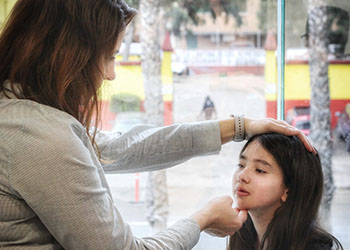 What’s it like to work with patients?
What’s it like to work with patients?
One of the reasons I love plastic and reconstructive surgery is that we have the privilege of coming into peoples’ lives and contributing to something that makes it better. If someone is sick or they face something life-threatening and they are cured, that’s obviously profound in a way that is hard to imagine unless you’ve been through it, and many of my surgical colleagues are involved in that kind of thing. But it is also profound to journey with someone who gets their life back in a different way—someone born with a craniofacial deformity for example—who was functional but becomes even more functional, and integrated into society and accepted. There’s something really precious about that and being able to share that journey with patients and their families from infancy to adulthood. And those patients, because of what they’ve been through, they often become very sensitive towards the world. They have a different perspective. I always feel I learn a lot from them. It’s a very mutual exchange.
